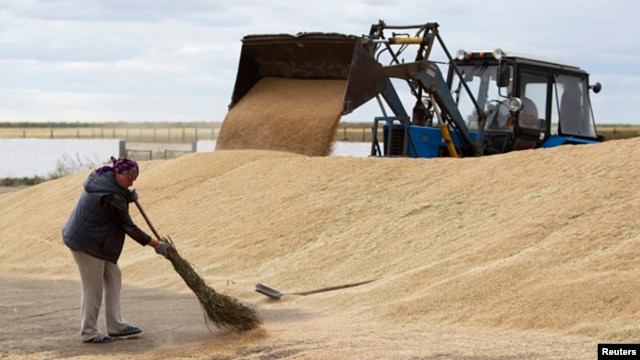ScienceRocks
Democrat all the way!
- Banned
- #1
Prices Soar on Crop Woes(U.S. Cuts Global Grain Supply Outlook)
WSJ ^ | 01/13/11 | SCOTT KILMAN And LIAM PLEVEN
JANUARY 13, 2011
Prices Soar on Crop Woes
U.S. Cuts Global Grain Supply Outlook; Higher Prices Expected at Grocery Stores.
By SCOTT KILMAN And LIAM PLEVEN
Evidence of tightening global food supplies grew as the U.S. Agriculture Department cut its estimates for global harvests of key crops and raised some demand forecasts, adding to worries about rising food prices.
Prices of corn and soybeans leapt 4% Wednesday and wheat gained 1%, continuing the broad rally in commodity prices that began in June. With yesterday's gains, prices of corn futures contracts are now up 94% from their June lows; soybeans are up 51% and wheat is up 80%.
The USDA's revisions reflect the impact of dry weather in South America and floods in Australia, which have compounded supply constraints that first started to emerge in the middle of last year, when a drought in Russia ravaged that country's wheat fields. The agency also cut estimates for U.S. harvests of corn and soybeans.
At the same time, demand is increasing. The USDA said ethanol producers likely will increase their use of corn, and consumption by emerging market countries continues to be strong.
(Excerpt) Read more at online.wsj.com ..
WSJ ^ | 01/13/11 | SCOTT KILMAN And LIAM PLEVEN
JANUARY 13, 2011
Prices Soar on Crop Woes
U.S. Cuts Global Grain Supply Outlook; Higher Prices Expected at Grocery Stores.
By SCOTT KILMAN And LIAM PLEVEN
Evidence of tightening global food supplies grew as the U.S. Agriculture Department cut its estimates for global harvests of key crops and raised some demand forecasts, adding to worries about rising food prices.
Prices of corn and soybeans leapt 4% Wednesday and wheat gained 1%, continuing the broad rally in commodity prices that began in June. With yesterday's gains, prices of corn futures contracts are now up 94% from their June lows; soybeans are up 51% and wheat is up 80%.
The USDA's revisions reflect the impact of dry weather in South America and floods in Australia, which have compounded supply constraints that first started to emerge in the middle of last year, when a drought in Russia ravaged that country's wheat fields. The agency also cut estimates for U.S. harvests of corn and soybeans.
At the same time, demand is increasing. The USDA said ethanol producers likely will increase their use of corn, and consumption by emerging market countries continues to be strong.
(Excerpt) Read more at online.wsj.com ..



